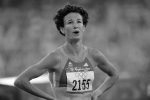Review of First Term Topics Physical and Health Education Primary 4 Second Term Lesson Notes Week 1
Welcome Test Review of First Term Topics: Physical and Health Education
Class: Primary 4
Term: Second Term
Week: 1
Age: 8 – 9 years
Topic: Review of First Term Topics
Sub-Topic: Locomotive and Non-Locomotive Movements, Athletics, Track Events, Field Events, and Relay Races
Duration: 40 Minutes
Behavioral Objectives
At the end of the lesson, pupils should be able to:
- Recall the meaning of locomotive and non-locomotive movements.
- Identify examples of locomotive and non-locomotive movements.
- List various athletics events (track, field, and relay).
- Explain the importance of athletics to physical fitness.
- Differentiate between track and field events.
Keywords: Locomotive, Non-locomotive, Athletics, Track, Field, Relay
Set Induction
The teacher will ask pupils to mention games or sports activities they enjoy participating in and discuss how these involve movement.
Entry Behavior
Pupils are familiar with basic physical movements and sports terms from their first term lessons.
Learning Resources and Materials
- Flashcards showing examples of locomotive and non-locomotive movements.
- Pictures of track, field, and relay events.
- Videos or animations of athletic activities.
Building Background/Connection to Prior Knowledge
The teacher will ask pupils to recall activities they learned about in the previous term, such as running, jumping, and walking.
Embedded Core Skills
- Critical thinking
- Observation
- Teamwork
- Communication
Reference
Lagos State Scheme of Work for Primary 4 Physical and Health Education
Instructional Materials
- Charts showing different athletic events
- Marker board and markers
- Whistle for demonstration purposes
Content
- Locomotive Movement
- Definition: Movements that involve traveling from one place to another.
- Examples: Running, jumping, skipping, hopping, and crawling.
- Importance: Helps improve coordination, balance, and physical fitness.
- Non-Locomotive Movement
- Definition: Movements performed on the spot without changing location.
- Examples: Bending, twisting, stretching, and swinging.
- Importance: Enhances flexibility, stability, and strength.
- Athletics
- Definition: Sports activities that include running, jumping, and throwing.
- Categories:
- Track Events: Running races such as sprints (100m, 200m), middle distance (800m), and long-distance races.
- Field Events: Activities like long jump, high jump, shot put, and discus throw.
- Relay Events: Team races where participants pass a baton to the next runner.
- Benefits of Athletics
- Improves overall fitness and health.
- Promotes teamwork and sportsmanship.
- Encourages goal-setting and discipline.
Evaluation
Fill-in-the-blank Questions
- Movements that involve traveling from one place to another are called __________.
a. Non-locomotive
b. Locomotive
c. Static
d. JumpingAnswer: b. Locomotive - __________ movements are performed without changing location.
a. Locomotive
b. Relay
c. Non-locomotive
d. AthleticAnswer: c. Non-locomotive - Running, jumping, and throwing are examples of __________.
a. Athletics
b. Swimming
c. Fieldwork
d. Non-locomotive movementsAnswer: a. Athletics - A __________ event involves passing a baton from one team member to another.
a. Track
b. Field
c. Relay
d. Non-locomotiveAnswer: c. Relay - __________ are sports activities that include running races.
a. Field events
b. Track events
c. Non-locomotive activities
d. Flexibility exercisesAnswer: b. Track events
Class Activity Discussion
- What is the difference between locomotive and non-locomotive movements?
- Answer: Locomotive movements involve changing location, while non-locomotive movements are performed on the spot.
- Can you list two examples of track events?
- Answer: Sprints (100m) and long-distance races (800m).
- Why is relay racing considered a team sport?
- Answer: Because it involves cooperation and passing the baton among team members.
Presentation Steps
- Introduction
- The teacher revises the concepts of movement and athletics from the first term.
- Lesson Development
- The teacher explains locomotive and non-locomotive movements using flashcards and demonstrations.
- Athletics is introduced, with examples of track, field, and relay events.
- Pupils are allowed to discuss and share their experiences.
- Conclusion
- Pupils summarize what they have learned.
Teacher’s Activities
- Explain the difference between locomotive and non-locomotive movements.
- Use visual aids to demonstrate different athletic events.
- Encourage pupils to identify movements and classify them as locomotive or non-locomotive.
Learners’ Activities
- Participate in identifying examples of movements.
- Ask questions and share knowledge of athletics.
- Practice naming track and field events.
Assessment
Short-Answer Questions
- Define locomotive movement.
- Answer: Movement that involves traveling from one place to another.
- Mention two examples of non-locomotive movements.
- Answer: Stretching and twisting.
- List one example of a track event.
- Answer: 100-meter sprint.
- Why is teamwork important in relay races?
- Answer: Teamwork ensures smooth baton passing and increases the chance of winning.
- Mention two benefits of athletics.
- Answer: Improves fitness and promotes sportsmanship.
Conclusion
The teacher reviews key points, marks pupils’ work, and provides feedback to ensure understanding.
SEO Title: Review of Locomotive, Non-Locomotive Movements, and Athletics for Primary 4
Slug: review-locomotive-non-locomotive-athletics-primary-4
Focus Keyphrase: locomotive and non-locomotive movements, athletics for primary 4
Meta Description:
Related
Related posts:
- Physical Fitness Exercises Physical and Health Education Primary 4 Second Term Lesson Notes Week 5
- Middle-Distance Races Physical and Health Education Primary 4 Second Term Lesson Notes Week 2
- Long-Distance Races Physical and Health Education Primary 4 Second Term Lesson Notes Week 3
- Revision Physical and Health Education Primary 4 Second Term Lesson Notes Week 12
- Examination Questions Physical and Health Education Primary 4 Second Term
Related Posts

Understanding and Comparing Different Types of Government Civic Education Primary 4 First Term Lesson Notes Week 9
Verbal Reasoning Topic: Derivations (contd)
Revision Third Term Basic Science and Technology
About The Author
Edu Delight Tutors
Am a dedicated educator with a passion for learning and a keen interest in technology. I believe that technology can revolutionize education and am committed to creating an online hub of knowledge, inspiration, and growth for both educators and students. Welcome to Edu Delight Tutors, where learning knows no boundaries.